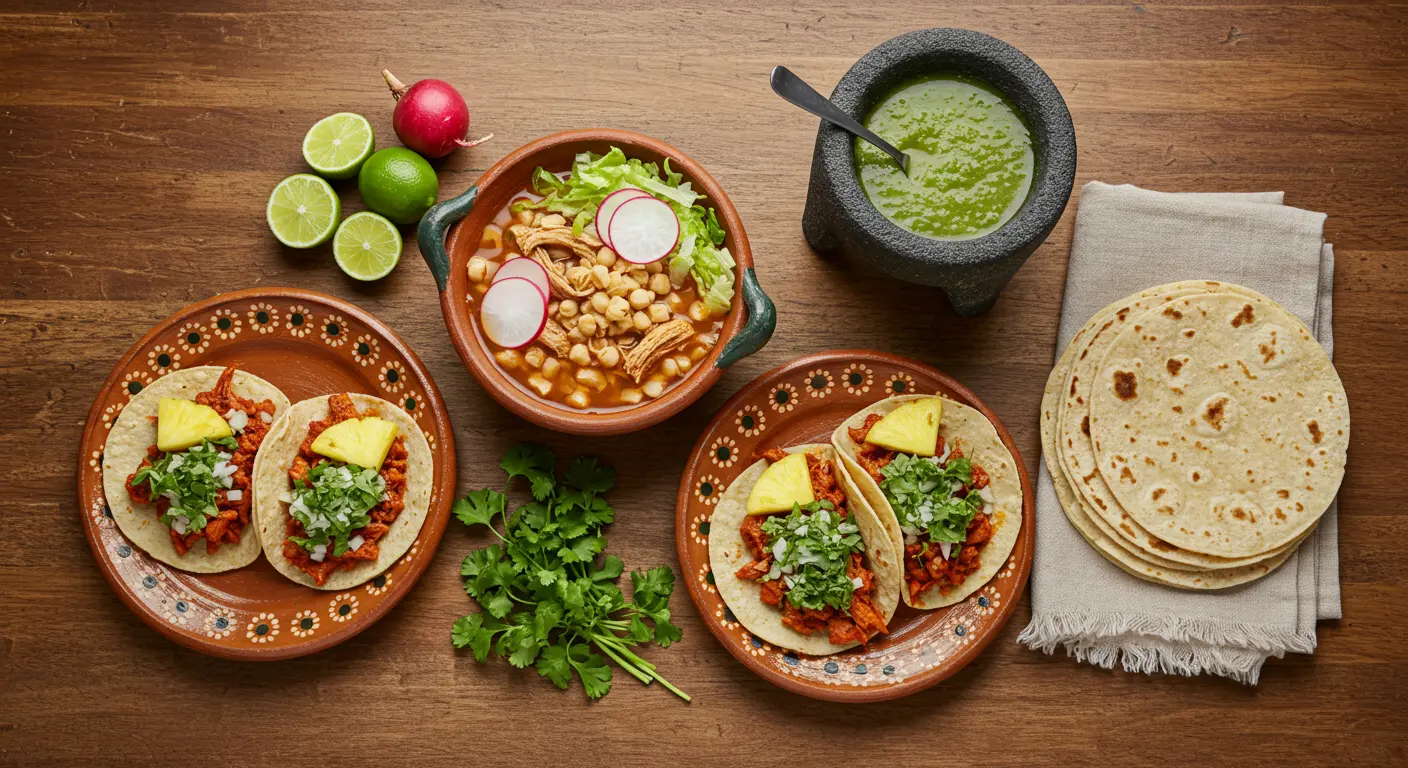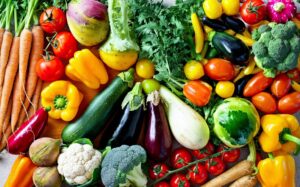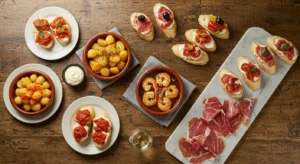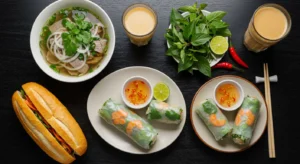Table of Contents
More Than Tacos: Your Friendly Guide to the Wonderful World of Mexican Food
You know the scene. The sizzling platter arrives at the table, steaming and vibrant. It’s a symphony of colors: the deep red of smoky salsa, the bright white of crumbled cotija cheese, the rich green of creamy avocado. The aroma hits you first—a complex blend of earthy cumin, fiery chilies, and slow-roasted meat. This is Mexican food. But if your experience with it starts and ends at a combination plate from a local spot, you’re missing out on one of the world’s most diverse and soul-satisfying cuisines.
Maybe you’ve felt a little intimidated staring at a menu filled with words like cochinita pibil, chiles en nogada, or huitlacoche. Or perhaps you wonder what truly makes a taco authentic. You’re not alone. Mexican cuisine is a vast universe, rooted in ancient traditions and shaped by a fascinating history. It’s so much more than just cheesy nachos and ground beef in a hard shell (though those have their place as tasty Tex-Mex inventions!).
This guide is your friendly passport. We’re going to wander beyond the buffet line and explore the real heart of Mexican cooking. We’ll uncover its core ingredients, decode the must-try dishes, and share a few tips so you can navigate any taquería or restaurant with the confidence of a seasoned foodie. Ready? Let’s dive in.
A Taste of Time: The Roots of Mexican Cuisine
To really appreciate Mexican food, you have to understand its incredible history. It’s a story of two worlds colliding in the most delicious way possible.
Imagine Mexico thousands of years ago. The Maya, Aztec, and other indigenous civilizations were cultivating an incredible pantry. Their diet was built on the “Three Sisters”:
- Corn (Maíz): The absolute cornerstone. It was nixtamalized (soaked in an alkaline solution), which made it more nutritious and allowed it to be ground into masa—the dough for tortillas and tamales.
- Beans (Frijoles): A crucial source of protein.
- Squash (Calabaza): Including pumpkins and their nutritious seeds.
To this, they added tomatoes, avocados, chocolate, vanilla, and a stunning variety of chilies. Then, in the 16th century, the Spanish arrived, bringing with them new animals like pigs, chickens, and cattle, along with dairy products, rice, wheat, and spices like cinnamon and cumin.
The fusion of these two culinary worlds created the Mexican cuisine we know and love today. It’s why you have a corn tortilla (indigenous) filled with slow-roasted pork (Spanish influence) and topped with onions, cilantro, and salsa (indigenous). This history is so vital that UNESCO recognized traditional Mexican cuisine as an Intangible Cultural Heritage of Humanity, a testament to its importance to the world.
The Building Blocks: Your Mexican Pantry Primer
Every great cuisine has its essential ingredients. Get familiar with these, and you’ll start to see the patterns in every dish.
Corn is King
Forget everything you know about sweet corn on the cob. In Mexico, corn is a savory staple. That nixtamalized corn dough, masa, is the soul of the cuisine. It’s pressed into tortillas, wrapped around fillings for tamales, and formed into thick discs for sopes and gorditas. The taste is earthy, slightly nutty, and unmistakable.
The Incredible Chili Pepper
This is where the magic—and the heat—happens. Mexican cooking uses a breathtaking array of fresh and dried chilies, each with its own unique flavor profile, not just its Scoville rating.
- Jalapeño: A familiar face, often used fresh in salsas and pickled as a condiment. When smoked and dried, it becomes a Chipotle, which is smoky and spicy.
- Poblano: Large, dark green, and relatively mild. When stuffed with meat and topped with a walnut sauce (nogada) and pomegranate seeds, it becomes the famous Chiles en Nogada, a dish that looks like the Mexican flag. When dried, it’s called an Ancho chili, which is sweet and fruity.
- Habanero: Small, lantern-shaped, and extremely hot! It’s common in the Yucatán Peninsula and has a distinct floral aroma behind its fiery punch.
The Holy Trinity of Freshness: Cilantro, Onion, Lime
Walk through any Mexican market, and you’ll see piles of bright green cilantro, white onions, and green limes. This trio is the finishing touch on countless dishes, providing a crucial burst of freshness that cuts through rich, spicy, and fatty flavors. A squeeze of lime and a sprinkle of chopped onion and cilantro can transform a simple taco into a perfect bite.
A Tour of the Menu: Dishes You Need to Know
Let’s move from theory to practice. Here’s a hit list of classic dishes to look for.
Tacos: The Art of Simplicity
Forget the pre-made hard shells. An authentic Mexican taco is a soft, warm corn tortilla holding a simple, well-seasoned filling. The toppings are usually just diced onion, fresh cilantro, and a choice of salsa. Some iconic varieties include:
- Tacos al Pastor: Perhaps the greatest fusion story. Inspired by Lebanese shawarma, thin slices of pork are marinated in chilies and achiote, then stacked on a vertical spit (trompo) and slow-cooked. It’s shaved off and served with a slice of pineapple. It’s a must-try.
- Carnitas: Literally meaning “little meats,” this is pork shoulder slow-braised in its own fat until it’s unbelievably tender and crispy on the edges. It’s a specialty of the state of Michoacán.
- Tacos de Pescado: Baja California’s gift to the world: lightly battered and fried fish tucked into a tortilla with a crunchy cabbage slaw and a creamy white sauce. It’s the original fish taco.
The Wonderful World of Salsa
Salsa is not just a red or green dip; it’s an essential condiment with endless variations. As the renowned culinary authority Diana Kennedy, who dedicated her life to documenting authentic Mexican cuisine, often emphasized, salsas are the heartbeat of the meal. They can be raw (salsa cruda) or cooked (salsa cocida), smoky or bright. From the simple pico de gallo to the complex salsa macha made with dried chilies and nuts, there’s a salsa for every occasion.
Hearty Stews and Casseroles
When you want something more substantial, look for these comforting dishes.
- Mole: This is the pinnacle of Mexican culinary complexity. Forget the idea of a simple chocolate sauce. Mole (from the Nahuatl word molli, meaning sauce) is a rich, intricate blend of sometimes 20+ ingredients, including chilies, spices, nuts, seeds, and a small amount of chocolate. The most famous, Mole Poblano, has a deep, smoky, slightly sweet flavor that’s incredibly nuanced. It’s a labor of love.
- Chiles Rellenos: A roasted poblano pepper stuffed with cheese or picadillo (a seasoned meat mixture), dipped in a fluffy egg batter, lightly fried, and smothered in a tomato sauce. It’s a celebration on a plate.
- Pozole: A hearty hominy (large corn kernel) stew, traditionally made with pork or chicken. It’s served with an array of toppings like shredded lettuce, radishes, avocado, and oregano, so everyone can customize their bowl. It’s a dish for festivities and cold nights.
Eating Like a Local: Tips for Your Next Meal
Feeling more confident? Here’s how to take it to the next level.
- Corn vs. Flour Tortillas: This is a common question. Corn is the traditional choice and is used for most tacos. Flour tortillas are more common in the northern states of Mexico and are typically used for burritos and quesadillas. When in doubt, go with corn for an authentic experience.
- The Condiment Ritual: Your meal will often arrive with a selection of salsas. Always taste a tiny bit on a chip or the edge of your taco first! Their heat levels can vary dramatically. That vibrant green salsa might be a mild tomatillo, or it could be a blistering habanero—you never know until you try.
- Explore Beyond the Restaurant: The real soul of Mexican food is often found in markets and street stalls. Some of the best food I’ve ever had came from a vendor with a small grill on a sidewalk. Don’t be afraid to try a taquería or a market stall; just look for a spot with a crowd of locals.
I’ll never forget the first time I tried real mole in a small family-run restaurant in Puebla. The owner spent twenty minutes explaining how her grandmother taught her the recipe, and you could taste that history and care in every bite. It was a reminder that this food is about connection, family, and celebration.
Frequently Asked Questions (FAQs)
Q: Is Mexican food always spicy?
A: Not at all! While chilies are a key ingredient, their purpose is often to add depth of flavor, not just heat. Many dishes, like quesadillas, flautas, and carnitas, are not inherently spicy. The heat usually comes from the salsas that you add yourself, so you have complete control.
Q: What’s the difference between Mexican food and Tex-Mex?
A: This is a great question. Tex-Mex is a delicious cuisine in its own right, born from the culinary traditions of Mexican-Americans in Texas. It features ingredients like yellow cheese, ground beef, sour cream, and hard-shell tacos, which are less common in traditional Mexican cooking. Think of fajitas, chili con carne, and nachos as classic Tex-Mex. Authentic Mexican food relies more on fresh ingredients, complex sauces like mole, and a wider variety of corn-based dishes.
Q: I’m a vegetarian. Is Mexican food vegetarian-friendly?
A: Absolutely! While meat is prominent, there are countless fantastic vegetarian options. Look for dishes like queso fundido (melted cheese with mushrooms or chorizo—ask for it without chorizo), rajas con crema (roasted poblano strips in cream), hongos (mushroom) tacos, flor de calabaza (squash blossom) quesadillas, and bean-and-cheese everything. Just be sure to ask if the beans are made with lard (manteca); many places offer vegetarian beans.
Q: What’s a good drink to pair with Mexican food?
A: A cold, crisp Mexican lager like Pacifico or Victoria is a classic pairing. For non-alcoholic options, you can’t beat a freshly made agua fresca—light, refreshing drinks made from fruit (like watermelon or hibiscus, called jamaica), rice (horchata), or seeds.
Q: Where can I learn more about the history?
A: For a deep dive, a great resource is the official UNESCO page detailing Mexico’s culinary heritage. It provides fantastic context on why this cuisine is so culturally significant.
Your Flavorful Journey Awaits
So, the next time you have a chance to explore Mexican food, see it as an adventure. Skip the predictable combo plate and be a little adventurous. Order the tacos al pastor you can now pronounce. Ask about the specials. Be brave with the salsa.
This cuisine is a vibrant, living tradition meant to be shared and enjoyed. It’s about the joy of a perfectly simple taco and the awe-inspiring complexity of a generations-old mole. It’s a journey of flavor that’s well worth taking. Now, who’s hungry?




